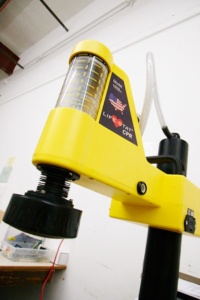Mechanical CPR devices are becoming more common in EMS, fire departments, and hospital emergency rooms. With the rise in popularity of this technology, it is important that both providers and even bystanders understand what these devices are and how they work. Covering the basics, following this list of do’s and don’ts of mechanical CPR in emergencies will help you understand the technology a bit better.

In the case of a cardiac arrest where a Mechanical CPR device is available…
Do start manual CPR right away.
A cardiac arrest victim’s chance of survival can be significantly increased by starting manual compressions as soon as possible.
Do make sure that the victim is securely strapped to the spine board before transport.
All mechanical CPR devices can migrate on a patient, but the chances of this happening can be significantly reduced by making sure the patient stays in place on the spine board.
Do have an extra power supply at hand, whether it is an oxygen tank or a battery.
The #1 cause of failure for mechanical CPR devices is a loss of power and the easiest way to avoid it is to carry a spare. In the event of a loss of power, it is usually faster to swap out the power supply than to remove the device and continue with manual CPR.
Do monitor the patient carefully for ROSC and/or responsiveness.
None of the mechanical CPR devices currently on the market have the ability to monitor patients, or the ability to react changes in a patient’s condition.
Don’t panic.
To be effective, CPR must be aggressive, manual or mechanical. All mechanical CPR systems have been designed to give cardiac arrest victims the best chance of survival. To ensure effective CPR, only compress the chest as far as necessary to create a palpable pulse. The AHA recommends a 2” minimum compression at 100 compressions per minute.
Don’t forget that machines are only as effective as the people that use them.
Mechanical CPR will never trump the ability of an experienced first responder to react to an abnormal situation. Many cardiac arrests can occur in situations that are ideal for the application of mechanical CPR but some scenarios might make the application of these machines impossible. Emergency service providers are most effective when they act with both versatility and speed.
If you would like to add to this list please do so by submitting a comment below.

